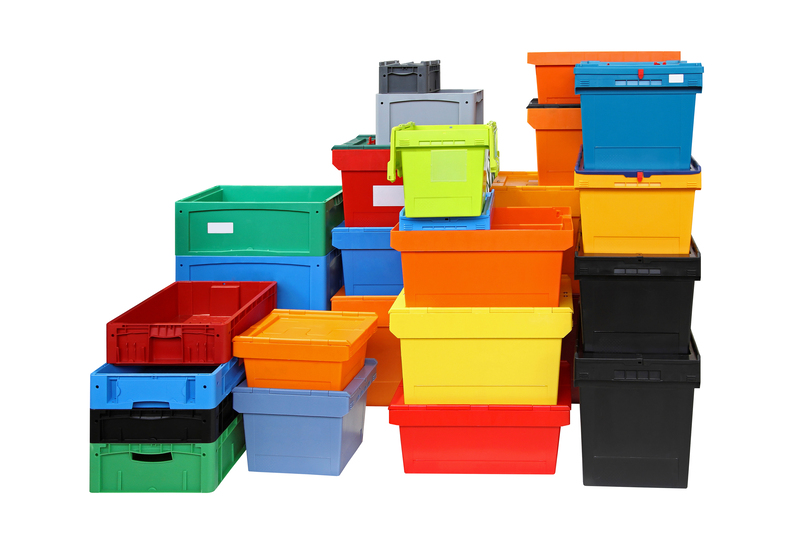Why Every Piano Move Needs Professional Planning and Muscle
Moving a piano isn't as simple as shifting a few boxes or rearranging furniture. Pianos are prized musical instruments -- often family heirlooms or significant investments -- that require great care during every stage of the moving process. Why does every piano move need professional planning and muscle? The answer lies in the piano's complexity, value, and the unique challenges they pose when being relocated. In this comprehensive article, we'll dive deep into the importance of proper planning and expert muscle for every piano move, exploring why this is never a job for amateurs.

The Sheer Weight and Complexity of Pianos
Types of Pianos and Their Weights
Pianos come in various shapes and sizes, from upright and grand to spinet and baby grand. Each type presents distinct challenges during a move due to their:
- Size and shape - Grand pianos can stretch over seven feet long, while upright pianos are more compact but equally heavy.
- Weight - An average upright piano weighs between 300-500 pounds, and grand pianos can tip the scales at 1,000 pounds or more.
- Delicate components - Each instrument contains thousands of intricate parts, including hammers, strings, pedals, and keys.
Lifting, maneuvering, and transporting such a bulky and sensitive object should never be underestimated.
Piano Moves Demand Specialized Knowledge
Understanding Piano Construction
Part of what makes moving a piano so precarious is its internal structure. A single bump or jolt can knock keys out of alignment, break strings, or cause lasting damage. Piano moving professionals not only study the internal mechanics but understand how to disassemble and reassemble parts as required for safe movement.
Knowing the Safest Paths
Moving a piano isn't just about lifting--planning the route is just as essential. Pros anticipate:
- Doorway sizes and clearances
- Hallway turning radii
- Staircases, landings, and tight corners
- Obstacles such as rugs, low ceilings, and uneven surfaces
These logistical analyses are part of why every piano move needs professional planning. Skipping this step risks both the instrument and your property.
Professional Planning Saves Time, Money, and Stress
Risk Management: Cost of Mistakes
One misstep could leave your piano scratched, chipped, or completely unplayable. Repairing these mistakes can cost thousands of dollars. Additionally, amateur moves often result in:
- Physical injuries to untrained movers or homeowners
- Property damage--scraped floors, dented walls, broken banisters
- Insurance claims and increased liability
Moving a Piano: What Professionals Do Differently
Only skilled piano movers carry the right knowledge to:
- Conduct site assessments for all obstacles and risks
- Develop detailed moving strategies based on piano type and move complexity
- Coordinate timing and manpower for each phase of the move
- Use protective equipment to minimize damage and safeguard surfaces
- Deploy trucks or vans equipped with climate control and shock absorption
Every piano move requires this expertise to ensure the preservation and safety of both the instrument and your property.
The Muscle Behind Every Successful Piano Move
Piano Moving: More Than Raw Strength
Shifting a 400-pound upright or a 1200-pound concert grand demands serious muscle power. However, it's not enough to simply have a strong back. Professional piano movers combine physical strength with:
- Teamwork - Coordinated lifts prevent injuries and instrument damage
- Use of specialized moving tools such as dollies, skid boards, ramps, and custom padding
- Knowledge of leverage and mechanics to maneuver in narrow spaces
- Experience handling unexpected obstacles during the move
By working as a cohesive team and utilizing the right equipment, professionals guarantee both muscle and finesse.
Specialized Equipment for Piano Moves
Moving a piano is radically different from standard furniture moving. Experts rely on:
- Piano boards (skid boards) - Sturdy platforms to strap the piano securely
- Heavy-duty dollies - Allow rolling even the largest uprights or grands safely
- Protective wraps and pads - Thick blankets and foam cushions for every surface
- Belts and harnesses to ensure secure handling
- Vehicle platforms with shock absorption and climate control
This equipment is rarely accessible to the average homeowner and is one of the key reasons every piano move needs **expert muscle** and the right gear.
When and Why to Hire Professional Piano Movers
Situations Demanding Expertise
Nearly all piano moves benefit from expert assistance, but professional help becomes essential in situations such as:
- Moving up or down stairs or to different floors
- Navigating narrow or angled hallways
- Long-distance or interstate moves
- Heavy, antique, or high-value pianos
- Moving during inclement weather or in challenging urban settings
Attempting these moves alone risks catastrophic results for both the piano and the movers.
The Value of Insurance and Guarantees
Another critical reason every piano relocation should be handled professionally: insurance and guarantees. Licensed piano moving companies protect your investment through:
- Comprehensive liability insurance
- Specific guarantees covering instrument condition and property
- Skilled handling, minimizing chances you'll ever need to file a claim
Without these legal protections, you could personally shoulder thousands in unforeseen costs if anything goes wrong.
Impact of Professional Moves on Piano Health and Longevity
Protecting the Piano's Delicate Parts
Pianos are not just heavy; they are delicate. An upright or grand is a carefully balanced acoustic marvel. During a move, a professional team will:
- Carefully disassemble and reassemble parts when needed
- Wrap and pad every surface to avoid cosmetic or structural damage
- Ensure the instrument is never exposed to harmful moisture or temperature fluctuations
- Transport upright for upright pianos and on their side for grands--always using the correct orientation
After a professional move, the piano is far more likely to arrive in tune, undamaged, and ready to play.
Maintaining Tuning and Sound Quality
Pianos are vulnerable to even small jolts. An amateur move almost always knocks them heavily out of tune or even alters their tonal quality. Piano movers take steps to:
- Minimize vibrations and shocks
- Avoid sudden temperature changes or excessive humidity
- Provide helpful advice for post-move tuning and maintenance
This attention to detail preserves not just the piano's looks but its musical integrity.
Common Mistakes in DIY Piano Moves
Risks and Real-Life Disasters
Countless disaster stories begin with the phrase, "We thought we could save money by moving the piano ourselves." Common mistakes include:
- Using the wrong equipment - Ordinary dollies, straps, or blankets can slip and fail
- Underestimating the weight - Leading to back injuries or crushed fingers
- Poor coordination - Lost balance results in tipping or dropping the piano
- Inadequate planning - Getting stuck in a staircase or damaging doorways and floors
In many instances, the cost of damages far outweighs the price of hiring professional movers in the first place.
Losses Beyond Just the Instrument
DIYers often overlook secondary risks, such as:
- Ruined floors or carpets
- Damaged walls, trim, or banisters
- Injury lawsuits if a friend or helper is injured during the move
- Lost sentimental value if the piano is an heirloom

The Smart Solution: Invest in Professional Piano Movers
Long-Term Value of Expert Care
When you add up the risks to your piano, your property, and your personal safety, the value of hiring professional piano movers is undeniable. The small upfront investment pays off in:
- Peace of mind - Knowing your instrument and home are in qualified hands
- Long-term health of your piano
- Avoidance of costly repair bills or insurance claims
- Quick, efficient, and stress-free moving experience
Whether you're moving across your living room or across the country, every piano move really does need careful planning and professional muscle.
Conclusion: Don't Leave Your Piano's Fate to Chance
Pianos are precious, complex, and expensive. Every move exposes them to risks that can lead to damage, costly repairs, and even lost musical value. The safest, wisest way to move your piano is to trust in professional planning and muscle: experts who bring deep experience, the right equipment, and a commitment to preserving your piano's health for years to come.
Don't gamble with something so valuable. Instead, ensure your next piano move is handled with the care only professionals can provide.
Ready to move your piano safely and stress-free? Contact a reputable piano mover in your area and experience the difference that expert planning and muscle make!



